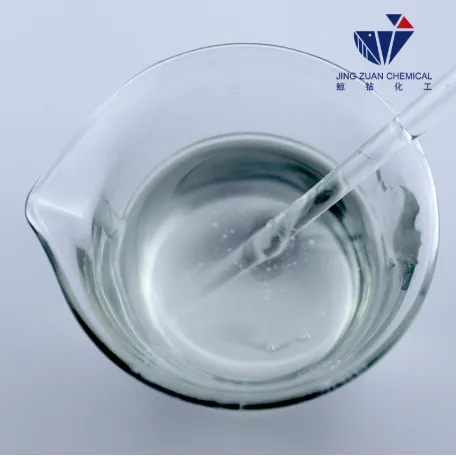
Dec . 03, 2024 15:43 Khutlela lethathamong
HPMC: The Unsung Hero in Personal Care Products
When it comes to personal care products, we often focus on the more recognizable ingredients like oils, acids, or vitamins. However, there’s one behind-the-scenes ingredient that plays a crucial role in improving the texture, feel, and overall performance of a wide range of products: HPMC (Hydroxypropyl Methylcellulose). A versatile, non-ionic cellulose ether, HPMC is not only used in construction materials and pharmaceuticals, but it has also earned its place as a key ingredient in the personal care industry. From shampoos to skin care products, HPMC contributes to a more enjoyable user experience and enhanced product performance.

Why HPMC is a Must-Have Ingredient in Skin Care Products
In the world of skin care, the texture and feel of a product are just as important as its effectiveness. That’s where HPMC comes in. Its moisturizing and thickening properties make it an essential ingredient in many skin care formulations.
When used in creams, lotions, or moisturizers, HPMC works to provide a smooth, silky texture that is easy to apply and absorbs quickly into the skin. It also helps to lock in moisture, ensuring that the skin stays hydrated for a longer period. This property is especially important in products designed for dry skin or harsh environmental conditions. By retaining moisture, HPMC helps to keep the skin soft, nourished, and supple.
Moreover, HPMC’s film-forming properties also contribute to improving the texture of the product, making it easier to apply and spread evenly across the skin. For consumers, this results in a more luxurious experience with noticeable results, making HPMC a preferred choice for high-quality skin care formulations.
HPMC’s Role in Shampoos and Hair Care Products
If you’ve ever used a shampoo or conditioner that felt especially rich and creamy, chances are HPMC was involved. HPMC is widely used in hair care products due to its ability to enhance viscosity and create a thicker, more luxurious formula. It is particularly effective in shampoos and conditioners, where texture plays a critical role in consumer satisfaction.
One of the most significant benefits of HPMC in shampoos is its ability to create a stable, uniform foam. This foam is essential not only for effectively cleansing the scalp and hair but also for creating a sensory experience that customers enjoy. The creamy, stable lather enhances the overall wash experience, making consumers feel like they’re getting the best value out of every use.
Furthermore, HPMC contributes to improved detangling and smoothness, making hair feel soft and manageable after use. In conditioners, HPMC acts as a key component that helps smooth the cuticle layer of the hair, resulting in improved shine and softness.
HPMC in Other Personal Care Products
In addition to skin care and hair care, HPMC is also a key ingredient in various other personal care products, such as toothpastes, antiperspirants, and cosmetic formulations.
In toothpaste, HPMC is used as a thickening agent, ensuring that the paste has the right texture for easy application. It also helps to maintain the proper consistency throughout the life of the product, even when exposed to moisture. The viscosity of the toothpaste is crucial to ensuring that it holds up in the tube and is easy to dispense without spilling.
In cosmetics, HPMC is often used in formulations like foundation, primer, or face masks. Its ability to create smooth, easily spreadable textures makes it perfect for these types of products. Additionally, HPMC helps improve the adhesion of cosmetics to the skin, resulting in longer-lasting makeup effects.
HPMC Safety and Regulations in Personal Care
As a non-ionic cellulose ether, HPMC is considered to be safe for use in personal care products. It is derived from natural cellulose, a substance that is abundant and biodegradable, making HPMC an eco-friendly choice for sustainable formulations. Additionally, HPMC is non-toxic and non-irritating, which makes it suitable for sensitive skin, and it is approved by many international safety standards and regulatory bodies, such as the FDA and European Commission.
In terms of security, HPMC is considered a gentle ingredient that doesn’t cause harm to the skin or hair, unlike certain harsher chemicals that can irritate or strip the skin of essential oils. That’s why it’s often used in products designed for sensitive skin, such as baby lotions or products for eczema-prone skin.
Proper testing and compliance with safety standards ensure that HPMC can be used without concerns for irritation or side effects, giving both manufacturers and consumers peace of mind.
It’s clear that HPMC is more than just an industrial material. Its remarkable moisturizing, thickening, and film-forming properties make it a standout ingredient in the personal care industry. Whether used in shampoos, skin care products, or even cosmetics, HPMC plays a vital role in improving the texture, feel, and performance of the product. With its proven safety, versatility, and effectiveness, it’s no wonder that HPMC is becoming a preferred choice for leading personal care brands worldwide.
As a reliable HPMC supplier, we are committed to providing high-quality HPMC lihlahisoa that meet the growing demands of the personal care industry. Whether you're developing shampoos, lotions, or toothpaste, you can trust HPMC to enhance the performance of your products and help you deliver an exceptional user experience.
Ready to give your products the boost they need? Contact us today to learn more about our HPMC lihlahisoa and how we can help your business succeed in the personal care market!
-
Versatile Hpmc Uses in Different Industries
LitabaJun.19,2025
-
Redispersible Powder's Role in Enhancing Durability of Construction Products
LitabaJun.19,2025
-
Hydroxyethyl Cellulose Applications Driving Green Industrial Processes
LitabaJun.19,2025
-
Exploring Different Redispersible Polymer Powder
LitabaJun.19,2025
-
Choosing the Right Mortar Bonding Agent
LitabaJun.19,2025
-
Applications and Significance of China Hpmc in Modern Industries
LitabaJun.19,2025







